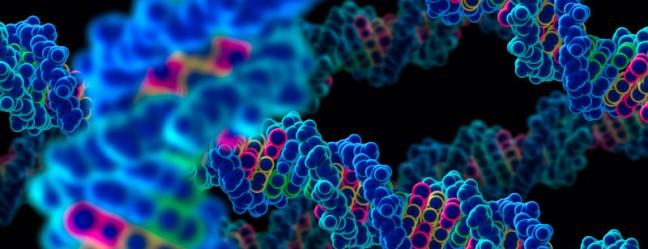Ted Meyer was six years old the first time he got involved in medical research, by donating a sample of bone marrow. He had just been diagnosed with Gaucher disease, and his parents hoped their son’s participation might help him and others with the potentially fatal inherited metabolic disorder.
Category Archives: Brain Research
Parkinson’s Researchers Attend a Gaucher Meeting … WHY?
Continue reading Parkinson’s Researchers Attend a Gaucher Meeting … WHY?
GBA – A Layman’s Overview
Now that there is conclusive evidence of a link between Parkinson’s disease and a defective GBA gene, let’s take an in-depth look at the disease that is caused by defective GBA – Gaucher disease. We will look at the forms of the disease that affect the brain (mostly in children) and make an effort to explain Gaucher disease in its simplest terms – “A Layman’s Overview”. We will explain the disease in a logical progression, from the basic genetics (how a child gets the disease) through the potential outlook for a cure.
First The Genetics
Let’s begin by understanding that genes within the body provide certain functions necessary for good health. In other words, every gene has a job to do. Second, every gene in the body comes as a “pair”, meaning that there are two that provide the same function. Think of a pilot and a co-pilot who fly a plane. Collectively, they have a job to do – fly the plane. Every person’s body is composed of thousands of pilots and co-pilots (i.e. genes) each with their own instructions on where to fly the plane. Of the thousands of genes that we have, each of us has approximately 10 genes that have a co-pilot that does not know how to fly (defective). This is referred to as carrier status. It does not cause health problems because a person who is a carrier still has the pilot (the healthy side of the pair) who knows how to fly a plane and provides the necessary function for the body. In summation, everyone reading this newsletter is a carrier of some genetic defect because we all have approximately 10 co-pilots on various genes that do not know how to fly. Again, carriers carry the gene (defective co-pilot) for the disease, but do not have the disease because the pilot is healthy.
An abnormally large percentage of Parkinson’s patients are carriers (GBA gene).
Is there a Parkinson’s – Gaucher Link?
Gaucher disease is an example of a “Mendelian” disorder, where defects in a single gene are the primary cause of the disease. Many common human diseases, such as hypertension, diabetes and arthrosclerosis, result from interactions between multiple genes and environmental factors such as diet, infections or exposure to toxins. In order to understand the changes in cellular mechanisms that result in these complex, or “multigenic’, diseases, researchers can gain information from rare, single gene disorders that share symptoms with more common, complex diseases.
A link to Parkinson’s
As far back as our 2006 Brain conference two things became clear:
1) That research being conducted on various brain diseases were starting to find similarities between and among different neurological diseases.
2) Parkinson’s research was beginning to connect the dots to a possible GBA link.
We purposefully invited medical researchers from the the Parkinson’s field of research as well as researchers pursuing other brain diseases. We set aside ample time for presentations – and to say the least the discussion and debate was lively. At the 2006 conference Dr. Ellen Sidransky from the National Institutes of Health presented her research, and since that time she and others have continued their quest to determine if indeed there is a link that deserves further exploration. Below is a article published last fall in the LA Times summarizing some of the most recent research findings, and substantiating the direction we took with the 2006 agenda.
Gaucher disease linked to Parkinson’s
Los Angeles Times, October 21, 2009 | 5:04 pm
People who carry the gene for a rare genetic problem known as Gaucher disease have at least five times the normal risk of developing Parkinson’s disease, researchers reported today in the New England Journal of Medicine. Some clinicians had noticed an apparent link between the two conditions in the past, but a new international study of nearly 5,700 people is the first to show the magnitude of the risk. The finding suggests that the gene is one cause of the disease, but indicates that other factors must be operating as well because not all patients who have Gaucher also develop Parkinson’s.
Gaucher disease, which afflicts an estimated 5,400 Americans, is caused by defects in the gene known as GBA, which serves as the blueprint for the production of an enzyme known as glucocerebrosidase. The enzyme breaks down a fatty substance called glucocerebroside which, when not disposed of, can harm the spleen, liver, lungs, bone marrow and, in some cases, the brain. People with two defective genes suffer from the disease, which comes in three distinct types. Lifespan may range from as little as 2 years to as many as 40 or 50.
People with only one defective gene do not suffer from symptoms and are said to be carriers. About one in 100 Americans carries the gene, but among certain groups, like Ashkenazi Jews, the incidence rises to one in 15. It was previously thought that the gene was harmless in such people, but the new results show that is not the case.
Dr. Ellen Sidransky of the National Human Genome Research Institute had been intrigued by an observed link between Gaucher and Parkinson’s. To explore it, she organized a consortium of 64 researchers at 16 institutions worldwide–virtually every Gaucher researcher in the world. They studied two common GBA variants in 5,691 people with Parkinson’s disease, including 780 Ashkenazi Jews, and compared them to 4,898 disease-free individuals, including 387 Ashkenazi Jews.
They found that 3.2% of the Parkinson’s patients had at least one of the common variants, compared with only 0.6% of the healthy people, a five-fold increase. Among the Jews, 15.3% of those with Parkinson’s carried the gene, compared with 3.4% of healthy Jews.
Five of the research centers sequenced the entire GBA gene in 1,642 non-Ashkenazi Parkinson’s patients and 609 health non-Ashenazis, looking for other mutations. They found mutant genes in 7% of the patients, indicating that their risk of developing Parkinson’s was 10 times normal.
The finding does not offer any new ideas about how to treat Parkinson’s disease. Indeed, researchers are currently at a loss to explain the mechanism by which the defective gene increases the risk of Parkinsonism, which affects an estimated 3 million to 4 million Americans. But they hope that exploring the link will provide new information about how the disease develops and progresses.
— Thomas H. Maugh II




